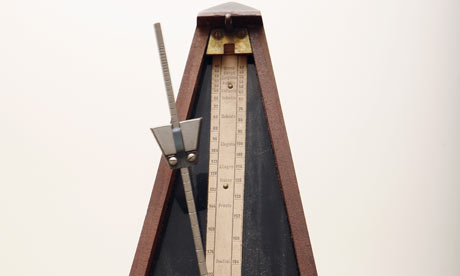Rushing isn't necessarily bad
Saying that rushing isn't necessarily bad may be a somewhat controversial opinion, but I believe we need to rethink how we use this word. Here is a simple experiment to illustrate my point:
 |
| The great bassist Hassan Shakur! |
1. Listen to the recording at the top (which features my great teacher Chuck Redd on Vibes, Ehud Asherie on Keys, and Hassan Shakur on Bass) straight through. Ask yourself how it sounded and felt. To my ear the whole things sounds pretty good and the band is swinging throughout.
2. Now listen again, but this time skip from the head in right to the head out. We were definitely rushing!
Here is the thing, human beings don't really experience or play music non-linearly. We can and should only play what feels good in the moment, and in general, what feels good in the moment isn't necessarily metronomically precise. If we go back and analyze a recording, sometimes what felt good in the moment is essentially a gradual increase in tempo over the course of a song. In other words, rushing. I have found that this tendency to rush seems most powerful in a live setting.
Another more famous example from Max Roach, try doing the same listening experiment:
Again, to my ear this recording sounds great all the way through, but man are they rushing like crazy!
Playing on top of the beat vs. Rushing
There are so many examples of classic recordings like the one above where the playing rushes, but still feels and sounds so great that labeling it as "rushing" seems completely irrelevant. Many jazz musicians I know talk about playing on top of the beat as opposed to rushing, and I think this terminology makes a useful distinction. Playing on top of the beat generally means playing with a sense of forward motion by slightly anticipating the quarter note pulse. In reality, this type of playing often leads to an increase in tempo over the course of the song.
 |
| Playing on top |
I think that playing on top of the beat only becomes rushing (and hence a really serious problem) when it happens either so quickly or so dramatically that it disrupts the feel of the music. In other words, a gradual increase in tempo of over the course of a song like in the examples above wouldn't really be rushing in this scheme, it would just be playing on top of the beat.
Playing with or without metronomic precision can both produce great music
Let me make an analogy to art. For most of the history of western art, the primary objective of the artist was to record the visible world as accurately as possible. The attempt to translate reality onto the canvas produced some of the worlds greatest art and artists. Look at the incredible attention to detail in this self-portrait by Rembrandt for example.
 |
| Rembrandt |
At some point, artists began to realize that there was more to art than trying to reproduce reality, that art could have other more abstract priorities. This may or may not have had something to do with the fact that cameras were being invented, and the ability of a person to reproduce reality was being completely overshadowed by this new technology. But regardless, this increasingly abstracted art also produced some of the worlds greatest art and artists. Below is another self-portrait, this time by Picasso.
 |
| Picasso |
Even though Picasso's and Rembrandt's paintings clearly do not have the same priorities, both produce a real emotional experience and both are masterpieces. I think this same concept translates to music in that both music that is metronomically precise and music that is not can produce real emotional experiences for audiences.
 |
| You will never escape |
Sorry, you still have to practice with a metronome
Although this idea would seem to suggest that I don't think practicing with a metronome is very important, this is not at all the case. I think the skills you develop in pushing yourself to play accurately with a metronome are valuable regardless of whether you play with perfect precision on the bandstand or not. There are lots of examples of things that you need to practice hard and then essentially forget about when you are playing, and in my opinion playing with a metronome is one such thing.
The bottom line
There are two main points I want to emphasize:
1. Music doesn't have to be metronmically precise to feel good.
2. A gradual increase in tempo over the course of the song that
feels good should be referred to as "playing on top of the beat", not "rushing" .
"Rushing" only becomes a problem when, as you said, it occurs over such a short space of time that it becomes obvious, and upsets the feeling of the music.
ReplyDeleteListen to Canteloupe Island, with Tony Williams on drums, and you will hear a dramatic shift in tempo from beginning to end, but you only notice it when you skip from the end back to the intro.
As for playing ahead of the beat vs rushing, my thoughts are they are two different things. I have heard drummers (Steve Gadd, for example) play slightly ahead of the beat for an entire chorus without speeding up, then play behind the beat for the verses.
One of my drum teachers long ago advised me to think of the metronome blip or tick as a basketball, with 'on the beat' being at the top, and 'behind' and 'ahead' of the beat as down the sides of the ball.
Speeding up slightly can give the music a lift and feeling of excitement, whereas slowing down can kill a song completely.
Great example!
DeleteI definitely agree that it is possible to play on top of the beat without rushing, but often playing on top means ever so slightly increasing the tempo over the course of the song. I am thinking of it like a Venn diagram, where the overlapping section of playing on top and rushing is somewhat generous.
Love that analogy with the ball, very much like what playing in these ways feels like.